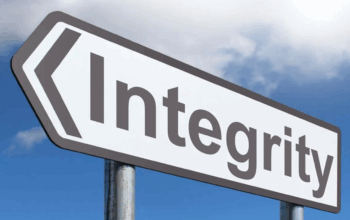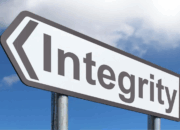In an unpredictable world, the pursuit of financial security is a universal aspiration. Life is full of uncertainties, from unexpected illnesses and accidents to natural disasters and economic downturns. While we can’t control every external event, we can certainly build robust defenses to protect our hard-earned assets and ensure our well-being. This is where the concept of a financial shield becomes paramount. Far more than just saving money, it involves a strategic blend of planning, protection, and proactive measures designed to safeguard your wealth, income, and future stability. This comprehensive guide delves into the essential components of building an impenetrable financial shield, exploring key protective mechanisms, crucial planning strategies, and the evolving landscape of personal financial defense.
Why is a robust financial shield so critical in today’s environment? The answer lies in the inherent volatility of life itself. Without adequate protection, a single unforeseen event can derail years of diligent saving and planning, leading to severe financial distress, debt, and compromised long-term goals.
The primary threats to financial well-being include:
A. Health Crises: Illnesses, injuries, and medical emergencies can result in exorbitant hospital bills, long-term care costs, and loss of income if you’re unable to work. B. Accidents and Disabilities: Car accidents, home damage, or any event leading to a temporary or permanent disability can incur massive expenses and significantly reduce earning capacity. C. Natural Disasters: Fires, floods, earthquakes, or severe storms can destroy property, requiring extensive repairs or reconstruction. D. Job Loss or Economic Downturns: Unexpected unemployment or a broader recession can abruptly cut off income, making it challenging to cover essential expenses. E. Premature Death: The passing of a primary earner can leave dependents in a precarious financial position, struggling with everyday costs and future planning (e.g., children’s education). F. Legal Liabilities: Lawsuits resulting from accidents or negligence can lead to significant financial judgments against you.
A financial shield acts as your primary defense against these perils, absorbing the shock and allowing you to recover without catastrophic loss. It transforms potential financial ruin into manageable setbacks.
The Pillars of Your Financial Shield
Building a comprehensive financial shield involves several interlocking components, each serving a distinct yet complementary protective function.
A. Emergency Fund: The Immediate Buffer
The foundational element of any financial shield is a robust emergency fund. This is readily accessible cash specifically designated to cover unexpected expenses or income loss.
- Purpose: To cover essential living expenses (housing, food, utilities, transportation, loan payments) for a set period in case of job loss, medical emergency, or unforeseen major expenses (e.g., car repair, home repair deductible).
- Size: Financial experts typically recommend saving three to six months’ worth of essential living expenses. For those with unstable incomes, high debt, or dependents, a larger fund (e.g., 9-12 months) might be more prudent.
- Accessibility: The fund should be held in a highly liquid account, such as a high-yield savings account or money market account, separate from your regular checking account. Avoid investments that tie up your money or expose it to market volatility.
- Benefits:
- Prevents Debt: You won’t need to resort to high-interest credit cards or personal loans during a crisis.
- Reduces Stress: Knowing you have a financial cushion provides immense peace of mind.
- Financial Flexibility: Allows you to ride out unexpected storms without compromising long-term investments.
B. Comprehensive Insurance Coverage: Risk Transfer
Insurance is the cornerstone of a financial shield, acting as a mechanism to transfer significant financial risk from yourself to an insurance provider in exchange for regular premium payments. It’s about protecting against low-probability, high-impact events.
- Health Insurance:
- Essential Protection: Covers medical expenses, hospital stays, doctor visits, prescription drugs, and sometimes preventative care. Without it, a single serious illness or injury can lead to medical bankruptcy.
- Types: Employer-sponsored plans, individual plans (marketplace/exchange), Medicare (for seniors), Medicaid (for low-income individuals). Understanding deductibles, co-pays, and out-of-pocket maximums is critical.
- Life Insurance:
- Protecting Dependents: Provides a financial payout to your beneficiaries upon your death. Crucial for anyone with financial dependents (children, spouse, elderly parents).
- Types:
- Term Life Insurance: Provides coverage for a specific period (e.g., 10, 20, 30 years). It’s generally more affordable and often recommended for most families as it covers the period when financial obligations (mortgage, child-rearing) are highest.
- Whole Life/Universal Life Insurance: Provides lifelong coverage and includes a savings or investment component (cash value). More complex and generally more expensive, often used for estate planning or specific long-term financial goals.
- Disability Insurance (Income Protection):
- Safeguarding Income: Replaces a portion of your income (typically 50-70%) if you become unable to work due to illness or injury. Your most valuable asset is your ability to earn an income, and disability can abruptly halt that.
- Types:
- Short-Term Disability (STD): Covers a brief period (e.g., 3-6 months). Often provided by employers.
- Long-Term Disability (LTD): Covers extended periods, potentially until retirement age. Crucial for long-term financial stability.
- Homeowner’s/Renter’s Insurance:
- Property Protection: Covers damage to your home (structure and belongings) from perils like fire, theft, vandalism, and certain natural disasters.
- Liability Coverage: Protects you if someone is injured on your property and sues you.
- Renter’s Insurance: Covers your personal belongings and liability even if you don’t own the property.
- Auto Insurance:
- Legal Requirement: Mandatory in most places. Covers damage to your vehicle, damage to other vehicles/property, and medical expenses for injuries in an accident.
- Liability: Covers damage and injuries you cause to others.
- Collision: Covers damage to your own vehicle in an accident.
- Comprehensive: Covers non-collision damage (e.g., theft, vandalism, natural disasters).
- Umbrella Insurance:
- Extended Liability: Provides an extra layer of liability coverage beyond the limits of your homeowner’s and auto insurance policies. Essential for high-net-worth individuals or those with significant assets to protect from large lawsuits.
C. Debt Management: Eliminating Vulnerability
High-interest debt is a significant vulnerability in your financial shield, akin to a gaping hole. Managing and strategically eliminating debt is crucial.
- Prioritize High-Interest Debt: Focus on paying down credit card debt, personal loans, and other high-interest obligations first. The interest payments can erode your financial progress rapidly.
- Debt Reduction Strategies:
- Debt Snowball: Pay off the smallest debt first to gain momentum.
- Debt Avalanche: Pay off the debt with the highest interest rate first to save the most money.
- Avoid Unnecessary Debt: Be cautious about taking on new debt, especially for depreciating assets or non-essential items.
- Manage Student Loan Debt: Explore options like income-driven repayment plans or refinancing if student loan payments are a significant burden.
- Mortgage Management: While a mortgage is often “good debt,” accelerating payments (if feasible) or refinancing to a lower rate can free up cash flow and reduce long-term interest costs.
D. Diversified Investments: Growth and Protection
Once your immediate protections (emergency fund, insurance, debt reduction) are in place, investments become a critical part of your financial shield, enabling long-term growth while managing risk through diversification.
- Asset Allocation: Spreading your investments across different asset classes (stocks, bonds, real estate, commodities) to reduce overall risk. When one asset class performs poorly, others may perform well, balancing your portfolio.
- Diversification within Asset Classes:
- Stocks: Invest across different industries, geographies, and company sizes (large-cap, mid-cap, small-cap). Use mutual funds or Exchange Traded Funds (ETFs) for broad diversification.
- Bonds: Vary bond types (government, corporate), maturities, and credit quality.
- Real Estate: Can provide income and appreciation, but consider illiquidity and management.
- Long-Term Perspective: Understand that market fluctuations are normal. A long-term investment horizon (e.g., 10+ years) allows you to ride out volatility and benefit from compounding returns.
- Regular Rebalancing: Periodically adjust your portfolio back to your target asset allocation to maintain your desired risk level.
- Tax-Advantaged Accounts: Utilize retirement accounts (401(k), IRA) and other tax-advantaged vehicles (HSA, 529 plans) to grow your investments more efficiently.
Proactive Planning: Fortifying Your Shield
A financial shield isn’t just about reactive measures; it requires continuous, proactive planning and adaptation.
A. Budgeting and Cash Flow Management
Understanding where your money goes is the first step in controlling it. A budget provides a clear picture of your income and expenses.
- Track Income and Expenses: Use apps, spreadsheets, or pen and paper to meticulously record all money coming in and going out.
- Categorize Spending: Group expenses (e.g., housing, food, entertainment, transportation) to identify areas where you can optimize.
- Set Spending Limits: Allocate specific amounts for different categories to ensure you live within your means and direct funds towards savings and debt repayment.
- Regular Review: Periodically review your budget (monthly or quarterly) and adjust it as your income, expenses, or financial goals change.
- Automate Savings: Set up automatic transfers from your checking to your savings and investment accounts to ensure consistent progress.
B. Estate Planning: Protecting Your Legacy
While uncomfortable to consider, estate planning is a crucial component of your financial shield, ensuring your assets are distributed according to your wishes and your loved ones are provided for.
- Will: A legal document outlining how your assets should be distributed and who should be the guardian of minor children.
- Trusts: Legal arrangements that hold assets for the benefit of beneficiaries, offering advantages like avoiding probate, providing for special needs individuals, or controlling asset distribution over time.
- Power of Attorney (POA): Designates someone to make financial and/or healthcare decisions on your behalf if you become incapacitated.
- Beneficiary Designations: Review and update beneficiaries on all financial accounts (life insurance, retirement accounts) as these supersede your will.
- Advance Directives (Living Will): Expresses your wishes regarding medical treatment should you become unable to communicate them.
C. Risk Assessment and Mitigation
Continuously assess your financial vulnerabilities and implement strategies to mitigate them.
- Professional Review: Regularly consult with financial advisors, insurance agents, and legal professionals to review your coverage, portfolio, and estate plan.
- Scenario Planning: Consider “what if” scenarios (e.g., job loss, long-term care needs, market crash) and develop strategies to address them.
- Diversify Income Streams: If possible, explore additional income sources (side hustles, passive income) to reduce reliance on a single job.
- Protect Personal Information: Implement strong cybersecurity practices to protect against identity theft and financial fraud.
- Continuous Learning: Stay informed about economic trends, financial products, and changes in tax laws that might impact your financial shield.
D. Long-Term Care Planning: Future Healthcare Needs
As lifespans increase, the potential need for long-term care (LTC) becomes a significant financial consideration. This includes assistance with daily activities due to chronic illness, disability, or cognitive impairment, often provided in nursing homes, assisted living facilities, or at home.
- LTC Costs: These can be extraordinarily high and are typically not covered by standard health insurance or Medicare.
- Planning Options:
- Long-Term Care Insurance: A specific insurance policy designed to cover LTC costs.
- Self-Funding: Saving and investing enough to cover potential LTC costs from your own assets.
- Hybrid Policies: Life insurance or annuity policies with LTC riders.
- Medicaid Planning: For those with very limited assets, Medicaid can cover LTC costs, but typically requires spending down most of your assets first.
Proactive LTC planning is vital to prevent future healthcare needs from decimating your savings and leaving a burden on your family.
The Evolving Landscape of Financial Security
The world of finance is constantly changing, and a truly robust financial shield must adapt to new threats and opportunities.
A. Digital Security and Cyber Threats
As more of our financial lives move online, cybersecurity becomes a paramount component of our financial shield.
- Strong Passwords and Multi-Factor Authentication (MFA): Essential for all online financial accounts.
- Vigilant Monitoring: Regularly review bank statements, credit reports, and investment accounts for suspicious activity.
- Awareness of Scams: Be educated about phishing, social engineering, and other online fraud attempts.
- Secure Wi-Fi: Avoid conducting financial transactions on unsecured public Wi-Fi networks.
- Identity Theft Protection: Consider services that monitor your identity and credit for fraudulent activity.
B. Inflation and Economic Volatility
Inflation erodes the purchasing power of your money over time, and economic volatility can impact investments.
- Inflation-Protected Investments: Consider Treasury Inflation-Protected Securities (TIPS) or real estate as hedges against inflation.
- Diversification Across Asset Classes: A well-diversified portfolio is better equipped to weather market downturns and periods of high inflation.
- Stay Invested: Avoid panic selling during market drops; a long-term perspective is key to recovering from volatility.
C. Behavioral Finance: The Human Element
Our own financial behaviors can be the biggest threat to our financial shield. Behavioral finance studies how psychological biases influence financial decision-making.
- Overcoming Emotional Biases: Avoid making impulsive financial decisions based on fear (e.g., selling during a market crash) or greed (e.g., chasing risky investments).
- Delay Gratification: The ability to postpone immediate rewards for greater long-term gains is fundamental to saving and investing.
- Avoid Herd Mentality: Don’t blindly follow market trends or popular investment fads without independent research.
- Seek Objective Advice: A financial advisor can help you make rational decisions, especially during stressful times.
D. Automation and Financial Technology (FinTech)
The rise of FinTech offers powerful tools to automate and optimize your financial shield.
- Budgeting Apps: Apps like Mint, YNAB, or Personal Capital can automate expense tracking, budgeting, and goal setting.
- Robo-Advisors: Automated investment platforms (e.g., Betterment, Wealthfront) can manage diversified portfolios based on your risk tolerance, often at lower fees than traditional advisors.
- Automated Savings Tools: Apps that round up purchases or automatically transfer small amounts to savings can painlessly build your emergency fund.
- Digital Insurance Platforms: Online platforms make it easier to compare insurance quotes and manage policies.
Leveraging these tools can make building and maintaining your financial shield more efficient and accessible.
Conclusion
In a world brimming with uncertainties, constructing a robust financial shield is not merely a prudent choice; it’s an absolute necessity. It moves beyond hope and relies on concrete, actionable strategies that empower you to face life’s inevitable challenges with confidence and resilience. By meticulously building an emergency fund, securing comprehensive insurance coverage, diligently managing and eliminating debt, and strategically diversifying your investments, you lay an unshakeable foundation for your financial well-being.
Furthermore, continuous proactive planning, embracing digital security, understanding economic forces, and leveraging FinTech tools are essential to fortify this shield against evolving threats. Your financial shield is not a static construct but a living, evolving defense mechanism that requires regular review and adaptation. By taking these deliberate steps, you don’t just protect your assets; you safeguard your future dreams, provide for your loved ones, and ensure a profound sense of peace of mind, allowing you to live your life with greater freedom and less financial anxiety. Invest in your financial shield today, and secure the tomorrow you envision.














